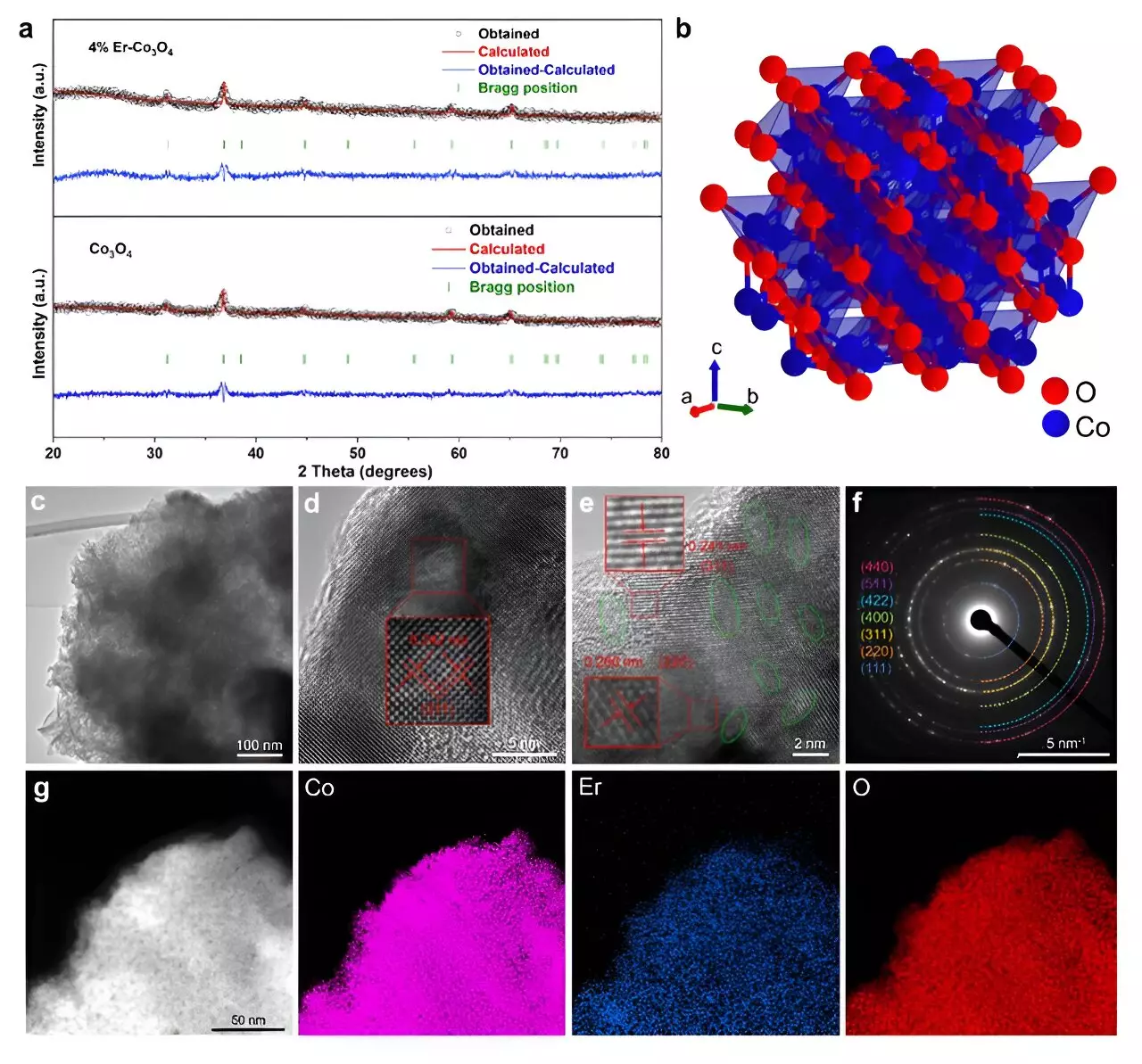Emerging research indicates a promising advance in electrocatalysis—a field dedicated to the efficient conversion of chemical energy into electrical energy. A research team has crafted an innovative electrocatalyst with pretentious capabilities, particularly in facilitating oxygen evolution reactions (OER) under acidic conditions. This discovery integrates a rare earth element, erbium (Er), into the widely utilized cobalt oxide (Co3O4), resulting in significant enhancements in both stability and efficiency. Not only does this discovery offer a cost-effective alternative to conventional precious metal catalysts, but it also propels the field of sustainable energy forward. The study’s promising results were featured in the prestigious journal ACS Catalysis and have garnered attention as an “Editors’ Choice.”
The oxygen evolution reaction plays an essential role in electrochemical processes such as water splitting, central to efforts geared towards generating renewable energy. Catalysts that facilitate OER need to exhibit enduring performance, particularly in challenging acidic environments. Historically, cobalt-based catalysts, characterized by their spinel crystal structure, rendered mediocre results albeit with improved stability and catalytic activity. A breakthrough in this domain is imperative, as it could revolutionize the efficiency of energy systems reliant on OER.
The research Team led by Tianyi Wang at Tohoku University’s Advanced Institute for Materials Research, disclosed a milestone in catalyst development through the incorporation of a mere 4% erbium into the Co3O4 structure. This strategic doping has rendered their catalyst capable of achieving an outstanding overpotential of merely 321 mV at a current density of 10 mA cm², a remarkable feat that noticeably rivals and occasionally surpasses the performance benchmarks set by more costly iridium-based catalysts. Wang emphasizes the dual benefits of the modification: “By doping with erbium, we can significantly upgrade both the catalytic activity and the durability of our material.”
Delving deeper into the science, the team illuminated the intricate mechanics that underlie the exceptional performance of the erbium-doped Co3O4 catalyst. Employing advanced methodologies such as density functional theory (DFT) modeling, the researchers demonstrated that the addition of erbium catalyzed the formation of additional active sites and structural defects within the cobalt oxide. This alteration increased the proportion of Co3+ ions compared to Co2+ ions, a critical factor in generating oxygen vacancies—an essential component accelerating the OER process.
Hao Li, another co-author of the study, elucidated these findings with a unique analogy: “Imagine the catalyst as a road. The introduction of Er acts like extra lanes, facilitating a smoother flow of traffic—here, the traffic represents the necessary oxygen intermediates for the OER.” The structural changes resulting from erbium doping allow the catalyst to expedite reaction kinetics by enhancing the availability of active sites.
Using in situ Raman spectroscopy, the researchers pinpointed the advantageous location of the oxygen vacancies in the octahedral sites of the Co3O4 framework. These vacancies are instrumental in facilitating the formation of essential intermediate species, which support the oxygen evolution reaction. The elevated Co3+/Co2+ ratio not only enriches the concentration of reactive Co3+ sites but also further bolsters the catalyst’s overall efficiency.
Wang concludes, “Achieving the right equilibrium in electronic and structural aspects is fundamental to our catalyst’s superiority. This unique blend is what set our work apart from predecessors.”
This innovative research sheds light on the vast potential of designing high-performance electrocatalysts that prioritize affordability while maintaining efficacy. Moving forward, the research group aims to expand their focus onto non-precious metal doping, aspiring to develop catalysts that are not just cost-effective but also globally accessible. This pivotal work not only enhances our understanding of catalysis but opens new avenues in sustainable energy solutions, marking a promising trajectory for future research within this vital domain. As we advance, the transition towards employing more affordable materials can reshape energy strategies on a global scale.

